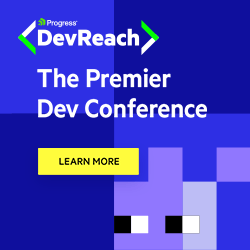Top 7 Vue.js Tutorials for Beginners in 2022

This handpicked list will help beginners to Vue find seven great resources to get started learning Vue.
I am sure you came here rummaging for some resources to begin the fantastic journey of learning the Vue.js framework, either as a first tool or an added tool to the other frameworks you are familiar with. Either way, you are in luck, since that’s what we will be covering in this post.
With the increased demand for more features, complexity, accessibility and performance that has surged with modern web apps, developers are faced with the more demanding task of shipping high-quality web applications that meet users’ needs in this modern era.
To aid this cause, well-thought-out chunks of code that provide a consistent and standardized structure of applications existing as libraries and frameworks have been developed to further bolster the developer’s prowess and ease the processes involved in shipping great apps to production.
Many great frontend frameworks/libraries have been developed over the years—each with its unique way of going about its business in building dynamic, data-driven user interfaces for web apps. In this post, we will pay attention to the big hitters in this long list of frameworks; according to the StackOverflow popularity stats of web frameworks in 2021, Facebook’s React.js is first, followed later by Google’s Angular and Vue.js.
At first thought, based on the popularity stats and the tech giant backings presented above, you might be tempted to write off Vue.js in a fuss, but attempting to interpret stats in this way might provide some misleading results. It will interest you to know that although Vue.js was created at a later time, in 2014, compared to the other two which came earlier, Vue has the highest GitHub stars at the time of writing, 190k—over React’s 185k and Angular’s 80k. This shows how Vue.js has evolved and become really popular in the industry.
All three frameworks are unique in their own way, but they share several similarities in their architecture. Vue.js is known to combine most of the best features of React and Angular at its core. Vue.js uses a Virtual DOM, one of the pertinent features that make React fast. Vue.js is also component-based, uses two-way data binding and takes a declarative approach—architecture shared by both Angular and React. Hence, all three frameworks follow the traditional MVC pattern. Vue.js also shares a similar templating syntax with Angular.
Prerequisites
Before learning Vue, the reader must have at least an average understanding of the three core web technologies—HTML, CSS and JavaScript.
Why Should You Learn VueJS?
Here’s a list of a few of the “why”s to consider before we jump into the how.
- Vue.js is a progressive framework, which simply means it allows you to adopt and integrate it in small, medium or large projects as need be—i.e., Vue provides all the flexibility we need to integrate it in any project either wholly (where it would control our entire application) or partially, to only handle certain portions of the app.
- With high customizability and simplicity backed by excellent documentation and an active community, Vue.js allows for a very smooth learning curve which speeds up its adoption by teams and companies.
- The simplicity of this framework—and this in no way means limitations in use—means that, irrespective of how Vue is used, we are still provided with a toolbox that allows building state-of-the-art web applications, either simple or complex, that scale seamlessly as required.
- Also, Vue.js is used by so many companies today, e.g., Alibaba, Google, Gitlab, Upwork, Apple, Facebook, etc. There is a very high likelihood of getting hired in the industry by learning Vue.
How To Learn Vue
Following is a list of some top tutorials, books and relevant articles that can get you started with Vue.js as quickly as possible.
It is important to note that most of the resources presented in this guide ensure that you learn the latest version of Vue, i.e., Version 3.x, which is still fully backward compatible with Vue 2.0 or lower. Your learning path must utilize the latest version of this technology and the new features it ships with it for several reasons—the most prominent being that the official documentation of Vue.js has been moved to Vue 3.
Vue 3 ships with some newer features that build on Vue 2, such as introducing the composition API, which allows you to develop better components and promote more reusability in your web apps, teleport components, and out-of-the-box support for TypeScript; better optimization of bundle size and so on. If you are already familiar with Vue 2, you can download this cheat sheet to see the migration guide.
Here’s a quick list of links to seven of the best tutorials for learning Vue, and below I’ll go into more detail about each:
- Vue - The Complete Guide (incl. Router & Composition API)
- Vue Mastery
- Vue School [guide for beginners]
- Vue JS for beginners (60 videos)
- Learn Vue 3, a Front-End JavaScript Framework
- Fullstack Vue 3
- The Official Vue Documentation
Vue - The Complete Guide (incl. Router & Composition API)
This course was created by Maximilian Schwarzmüller and uploaded to Udemy. The course currently has a rating of 4.8 stars with fantastic reviews. According to the course description, the course teaches the latest version of Vue (Vue.js 3) from the ground up and in great detail.
The course also covers all the core basics but does not stop after that—it also dives into advanced concepts like the Composition API introduced with Vue 3. It is also important to note that it is a paid course.
Here’s a link to Vue - The Complete Guide (incl. Router & Composition API).
Intro to Vue 3 by Vue Mastery
Vue Mastery is recommended officially by the Vue.js website as a platform to take both free and paid video courses to learn about the framework. The “Intro to Vue 3” guide covers 11 videos in a hands-on guide that starts by showing you how easy it is to integrate Vue.js into an existing web application and the basics of building Vue.js apps.
It covers most elementary concepts such as components, directives for attribute bindings, event handling at a fundamental level, etc. This is well suited if you want to get your feet wet and pick up the basics of Vue.
Here’s a link to Vue Mastery.
Vue School [Guide for Beginners]
Vue School provides a rich set of free and paid videos for developers at all levels to learn hands-on how to use the Vue framework. For the beginners’ section, you will be presented with an ordered set of resources, where you can learn the core concepts of the framework—including what components are, how they can be created (i.e., either using the Options or Composition API), understanding props and how to reuse components. You will also learn about the lifecycle of components in a Vue.js app, creating and managing state, directives for list rendering, event handling and much more.
The course description provided here is for the free section of the guide. However, you can always level up and further enhance your dexterity by taking the premium courses, which are still part of this beginner’s series to further improve.
Here’s a link to Vue School.
Vue JS for Beginners
Created by Codevolution YouTube Channel, this series is a very beginner-friendly guide that starts from scratch and covers all the necessary concepts you need to familiarize yourself with Vue.js at its most basic level.
You start by learning how to properly set up your development environment and then see the various ways you can use Vue.js in your app—including the popular method that uses the Vue CLI build tool. Then you will learn about components, directives, watchers, slots, options, Composition API, etc.
This guide takes you progressively from basic to the more advanced concepts pertinent to the framework.
Here’s a link to Vue JS for Beginners.
Learn Vue 3, A Front-End Javascript Framework
This 3-hour video starts as usual by showing you the basics of including the framework in a static HTML page as a standalone widget using the script tags. Soon you’ll be building a simple web application where you learn the standard fundamentals such as directives, attribute binding, components, etc.
Later, you will also learn to use the Vue CLI to create a SPA (Single Page Application).
Here’s a link to Learn Vue 3, A Front-End Javascript Framework.
Fullstack Vue 3
One of the best-selling Vue.js books, it was authored by senior software engineer Hassan Djirdeh and co-authored by Nate Murray and Ari Learner. They all are part of the constantly evolving and active learning community called newline. This book presents itself as a holistic guide for developers at any level to grasp virtually all the core features of Vue and the rich tools in the Vue ecosystem; in this guide, you will learn all the concepts for you to build world-class web apps with the best practices.
You will start progressively by understanding the framework; how you can set up your dev environment the traditional way, i.e., using a script tag and using the Vue CLI, and gradually touch on other concepts such as directives, event handling, advanced state management, routing, the Composition API, testing, etc.
This book covers them using a hands-on guide where you will build multiple web applications, starting with an upvote app, a calendar event app, a note-taking app, a shopping cart, etc. Each application will expose you to using one or more of the framework’s core features.
Here’s a link to Fullstack Vue 3.
The Official Vue Documentation
As you might have already inferred, the docs accurately describe every nitty-gritty detail about the framework and its features. There are so many sections in the documentation, each describing an aspect of the framework or how to use one or more of the framework’s features.
For beginners, you get a tutorial section where you are provided with a hands-on guide to understanding most of the Vue fundamentals. You are also equipped with a coding playground to make it easy to code along and get your hands dirty as you go through the tutorial series. It is essential that, despite going over all the other resources featured in this guide, you still have the docs as a reference to further tune your understanding of Vue.
Here’s a link to the official Vue Documentation.
Additional Resources
While most of the resources specified above allow you to quickly get started with Vue, going through most of the resources, you will indeed observe repeated patterns and concepts in each guide. On this note, listed below are links to cheat sheets to enable you easily recall these patterns and serve as a quick reference:
- Vue 3 Essentials Cheatsheet
- Vue 3 cheatsheet [Vue Mastery]
- Vue 3 cheatsheet
- The Ultimate Vue Cheat Sheet | Vue 3 & 2
Conclusion
Although there are many tutorials, courses and books on the internet to learn any technology, this guide provides you with some valuable resources, specially handpicked, to begin your journey of mastering the Vue.js framework.

Chinedu Imoh
Chinedu is a tech enthusiast focused on full-stack JavaScript and Infrastructure engineering.

